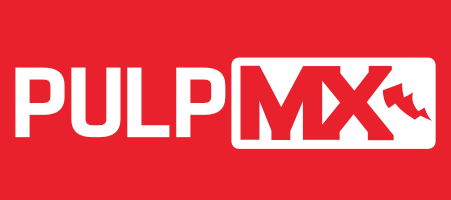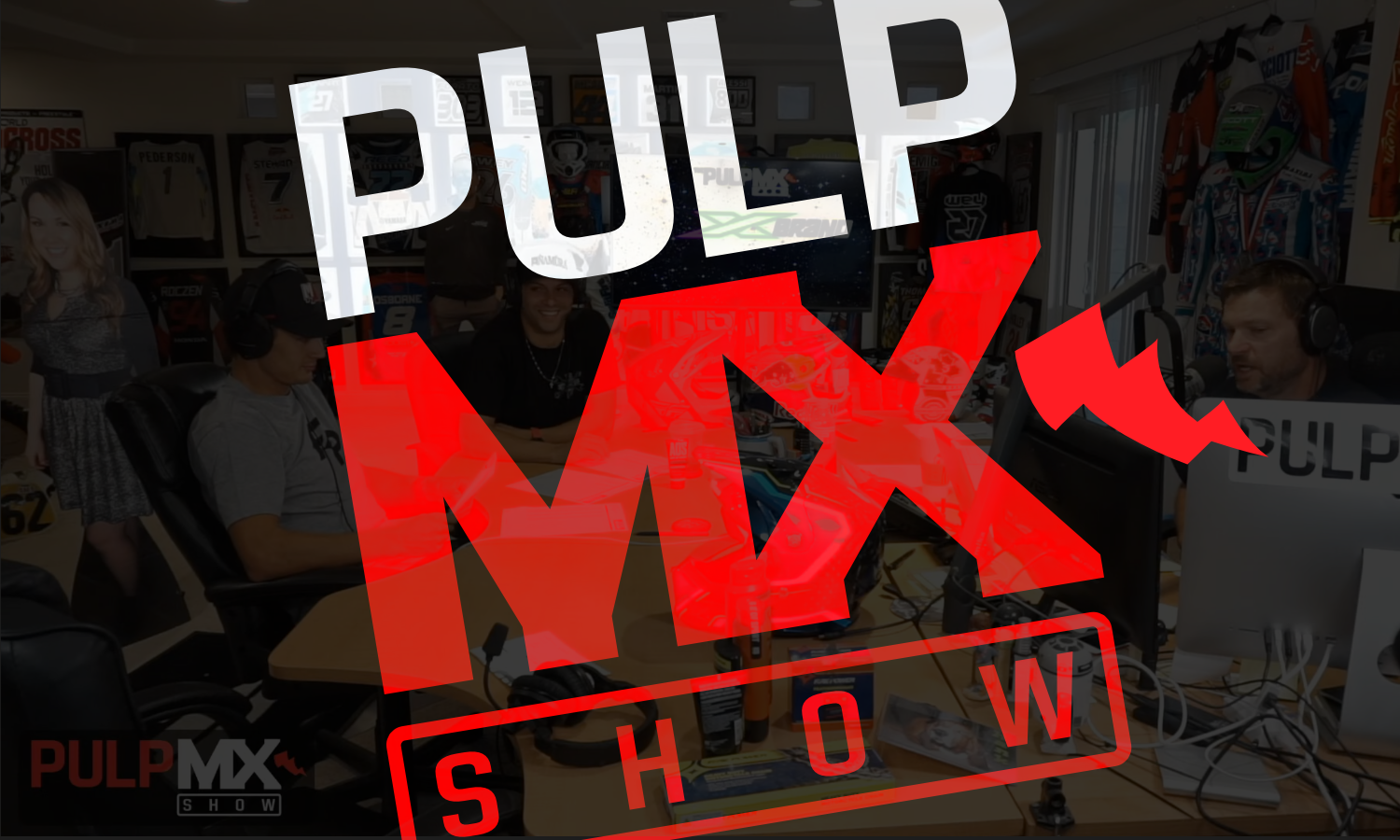1988 was Glover’s last year on Yamaha and here he talks about it
1988 was Glover’s last year on Yamaha and here he talks about it
I started shooting Motocross Photos in 1975 basically just because I liked to but then when I started showing some of the guys I knew who raced they would tell me, hey you should sell those, when I asked them “who would buy these?” they said we would we’ll buy them all. Those guys were true to their word and they bought every photo I took of them and that was the start of Buckley Photos. Since then I’ve shot a ton of local races around here in New England, I’d say 99.9% of the novices that have ever raced in New England have a Buckley photo of themselves hanging in their garage.
I also shot a ton of nationals and supercrosses X Games Gravity games road races GNCC’s a little bit everything over the years traveling around the country shooting for almost every motorcycle magazine in the world I guess as well as shooting for almost every motocross clothing and accessory company in America. Want to order a classic print or something else? Go to buckleyphotos.com and we’ll hook you up. Thanks for reading- Paul Buckley
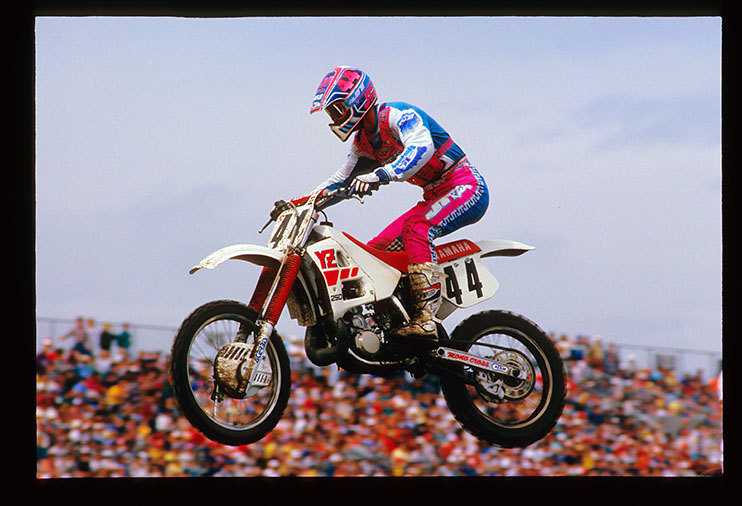 |
|
“I was good friends with the Gregory’s at JT and we talked a lot. This was kind of a color way that they wanted to push pretty strongly. It worked with what we were running. The last round, actually that was kind of a one-off helmet that Troy painted for me at that last race. The one last race at L.A. Coliseum Troy did my helmet. I think it’s still in their lobby. I gave it back to him and let him have it. The outdoor look, it was just kind of a look. It had some of the blue in there. I liked it at the time. I thought it was okay.” |
PHOTOS BY PAUL BUCKLEY
Broc Glover: “We (Yamaha) had been struggling coming up to this year, no question about it. We were the first team to go to the production rule bike. It was based on the cost at the time. The economy wasn’t great. Bikes weren’t selling very well. So Yamaha had decided in ’84 to go to the production-based motorcycle. And Yamaha had a lot of success actually winning on production-based motorcycles in the previous five or six years to ’88. I remember Hannah won some supercrosses. I think he even won Daytona on an actual production bike. I guess it didn’t say much for our works bikes when our production bikes were better than our works bikes! But later on in ’80, ’81, ’82 and that era the bikes were more similar than people think in performance level. The production bikes weren’t bad but we still rode more works bikes.
In ’83 there were the last of our real water cooled OW 250s, and those bikes were pretty good. Then we went in ’84 to the production bike and we were clearly at a major deficit at that point. That was probably the peak of Honda’s domination in technology and their factory RC bikes. Then ’85 still kind of the same situation a little bit but to a lesser extent. In ’86 and ’87 everybody went to production bikes per the new AMA rules, but we just never really had it going at that point. But in this year, 1988, the bike was significantly better. It was pretty decent.
Let me tell you a story about the year before this year. In ’87 at Hangtown, back then the Nationals and the Supercross series kind of ran together and at the first outdoor national at Hangtown. Johnson and Ward were 1-2 and I was actually in 3rd. I came around on the last lap and I had to change my line in this real rutty section because I think Billy Frank was actually being lifeflighted out of there, or they were trying to get him off the track. He got hurt pretty bad I believe.
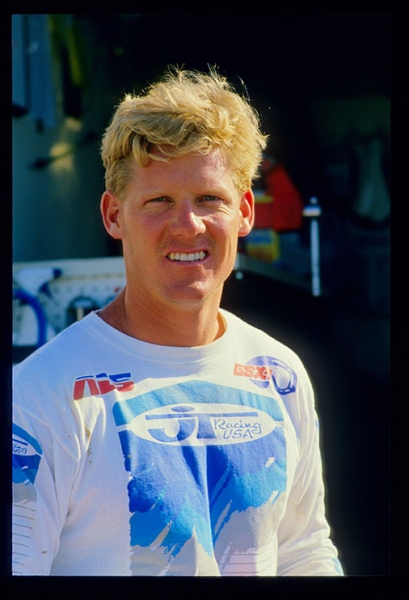 |
|
Glover had a rough three-year run at the end with Yamaha but he did win his last race. |
It was just a simple thing and I went through a rut. I was probably going 75% speed and full yellow flags in the area. I caught my foot in the rut. I hit a bump and it threw my foot off the peg, my leg sucked underneath the motorcycle and I ran it over. I knew I broke it. I was able to get back on the bike and ride around back to the pits. I remember coming in and Jon R was my mechanic and he had already run back to the pits. I told him, “catch me, catch me!” He was looking at me like, what are you talking about? I said, “Catch me! I broke my leg!” And he’s like, “What?” And literally he kind of held me and he’s like, “what are you talking about? You just got 3rd.” And I go, “No, I fell with less than a half a lap to go and I ran my own leg over and I think the thing’s broken. I can feel it inside of my boot.” And sure enough I broke the tibia and it’s a long bone fracture. Typical medical is 12 months before you get back to full contact sports. It took me the better part of 8 months or so before I got to race again. I was done for the year.
It was kind of an interesting time at that point. That next (1988) season was the last year of my three-year contract and there was no question during my rehab portion of it, I don’t know if Yamaha questioned my effort to get back on the bike or they just questioned that every month they had to send me a great big check and they probably didn’t like it, which is understandable. I actually went up to Idaho and I was living up there. I was going completely against doctor’s orders. I had made a special cast and literally had like a knee brace hinge in the middle of the cast and I had a cast on my thigh and a cast on my lower leg, and my ankle was immobilized. But I had a special little booty made that I could clip in and ride my bicycle. I actually raced in road bike races with a broken leg. I don’t think the doctor was too pleased when he found out about it but physically I was in great shape. I think when Yamaha asked me at one point to go see their doctor up in Idaho just to see what his thought was. He came back with the same opinion as my own doctor that, yeah, it’s too early to be back racing motocross and he probably shouldn’t be riding bicycles like he is, but as long as he doesn’t fall off he’ll be okay. So I think when I finally came back down to California and they looked at me like, “Okay this guy’s fit as he’s ever been. He doesn’t look like he’s been laying around the couch eating bonbons.” Then I think they were okay with it.
 |
|
Here’s Glover in ’85 when he won the 500 national title and came oh-so-close to winning the SX championship. |
I struggled with injury ’85 while I was leading the Supercross championship and leading the outdoor championship both when I broke my navicular and got it mis-diagnosed. I ended up racing on it for another two or three weekends and wrapped up the championship in the 500s. I shouldn’t have been riding on a broken bone in there because the bone’s shifting around and it keeps it from healing right. So it took a lot longer to get my navicular back where it should be. Then as soon as I came back from riding I landed hard again, and that was in the early part of ’86, and it broke again. Because the doctor said it was never healed properly in the beginning. It’s what they call a fibrous union where it looks great on an x-ray but it’s not really healed properly. The only thing good was that it kind of re-stimulated the healing process and it actually healed correctly and much quicker the second time. In hindsight I should have done what like when Jeremy McGrath did his. Just small incision, they go in and put a screw in it and it’s done. But at that time really the technology and medical wasn’t quite as good as it is now. It was a little bit more risky where nowadays it would be a no-brainer just to do it. I’d probably be riding a bike again in three weeks. But it felt better to come back.
Before my injury in ’85, for whatever it was worth, I remember Moto Verte always did their annual rankings of riders and that year in ’85 they ranked me as number 1 in the world. I felt pretty confident that I was riding well again. I was leading both supercross and outdoors series at the time. I knew I was one of the top two or three guys in the country for sure and probably in the world. To have it stopped by an injury and then literally jerking around with injuries for a two-and-a-half year period, the world passes you by. And in ’86 and ’87, we had a mass exodus at Yamaha. First Hannah left and he got over to Honda and really liked their bikes. Then (Ron) Lechien left, Rick Johnson left, then Jeff Stanton left… It was pretty apparent at that time that they (Honda) were spending a lot of money on their motorcycles and they were pretty darn good. They had a big effort. But I was loyal and I liked racing for Yamaha. I was planning on sticking my career out with them. I understand when you’re not winning the pressure internally from all sides gets higher.
So in ’88 they probably figured I was washed up and they had a new guy named Micky Dymond and he was going to be the next Supercross champion. He’d just come over from Honda and from winning a couple of championships. It seemed to me, from my vantage point, Micky was the golden child as he got the new upside-down forks. I never raced a single race with a pair of those… at least with the factory Kayabas I never did. I tired a few Simons ones in my day, but I didn’t have any of the latest technology that was coming over from Yamaha. It was all going to Micky. At the time that seemed kind of… I couldn’t see that happening in today’s ages let’s put it that way.
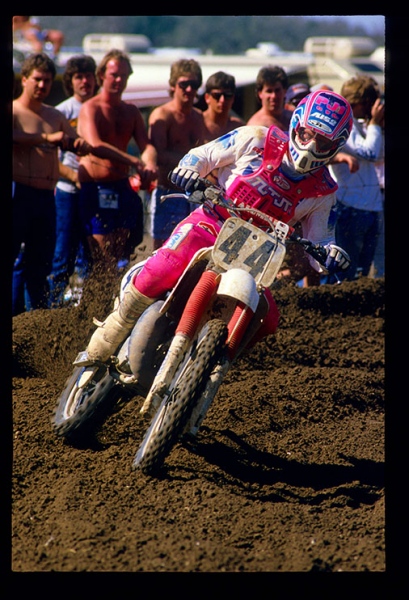 |
|
Glover at Gainesville in 1988. |
For some reason in 1988, the harder I trained and I was literally still getting, not tired, but I didn’t feel like I could ride as hard as I wanted to at the end of the race. After a while I wasn’t quite sure why that was. The testing wasn’t at the level, not even remotely, like it is today. Because of that you had a situation where I didn’t realize that our bikes were just too darn hard to ride, and in the supercross tracks we didn’t have the Dirt Wurx crew out there, the “dirt-ologists” making the track almost perfect every week. The track sometimes got really baked and hard-packed. It got slippery. The tracks got real hard and slippery and if the bikes hit too hard, you couldn’t put the power down. It wasn’t until I rode actually one the Honda. I think I rode Rick’s or somebody’s bike and I realized, these bikes are like an electric power band. They really, really are smooth off the bottom but as soon as you crack the throttle they start rolling. I think our bike, if you put them on a dyno, I think our bike would have had as much if not more horsepower. But we don’t race dynos and you got to be able to use a quarter of a throttle coming out of a slippery corner and make the bike make traction. And our bikes did not make traction.
So I talked to Mitch (Payton) about it because he was doing some pipes for the Honda guys and the bike I rode happened to have a Pro Circuit pipe on it. When I was coming back from my last injury, Mitch built me a 250 that I raced all sorts of local races on. That bike I actually liked a lot and I did really well on it and I got starts on it. Then when we got to the factory-backed engine, I never got along with it. Because of that, the final supercross race at the LA Coliseum, at that point Yamaha had kind of let me know that they weren’t going to renew my contract for the following year and that this is the end of the road with us. So I kind of asked them at the last race at L.A., “hey do you mind if I have Mitch do a motor for me and I at least try it out so I can kind of answer the question in my mind?” And they agreed. They built two motorcycles. I had two complete, different bikes. I rode one in one practice session, and rode another one in a different session. I rode two different bikes, just like Moto GP would do or something. I came back in and I said, “Well, what’s the lap times?” And they said on the Yamaha motor I was a little bit faster. I said, yeah, but when I came in after practice – I rode reasonably hard the whole time – I came in after the Yamaha motor and I came in after the Pro Circuit motor, I was exhausted after the Yamaha one in practice and I was fresh on the Pro Circuit one. So at that point I said, which bike can I go 20 laps on hard? And in my decision I felt like I could do it on the Pro Circuit motor, and the rest was history. I ended up winning. Looking back at it, it was one of those things you don’t think about so much at the time but knowing that was my last AMA Supercross race I ever rode and I won it, it was satisfying.
There were some offers after ’88 to stay in the USA but did I think they were serious… At the time in the U.S. the team you wanted to be on was the Honda team but they were completely full. I had some negotiations with them at times during my career but at that point they had Rick Johnson, they had Jeff Stanton, they had the guys they needed. So to answer the question, at that point no. It’s funny because at that point you’re 28 years old and you’re five years past your prime. I was debating on retiring completely and that’s when the KTM offer… And I had always wanted to go to Europe. I actually had talked quite a bit with Yamaha in Europe about racing GPs. They were kind of on the cusp of it but you’d think that they could have made something work considering the team that they had over in Europe wasn’t a particular powerhouse team, and they didn’t make it work.”
